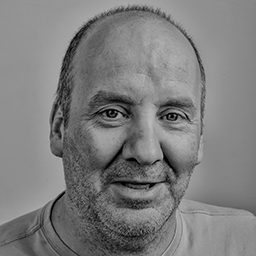With just five years left to meet the Sustainable Development Goals (SDGs) set forth by the UN 2030 Agenda, the world is at a crossroads for tackling the climate crisis, inequality and poverty. Despite the turmoil in the development sector and the world around us, this impending deadline should not be overlooked — and the importance of these goals to young people and future generations should not be overshadowed.
According to the United Nations, the global youth population will grow by more than 78 million between 2021 and 2030, with low-income countries accounting for almost half of that increase. As this population grows in number, young people are becoming more vocal in advocating for and advancing sustainable development. Yet they are also increasingly disenfranchised by — and disengaged from — traditional education and labor systems.
To reinvigorate youth participation in civil society, we must reimagine educational and professional attainment to meet the needs of the changing economy. Below, I’ll discuss how education systems can be adapted to prepare young people to navigate the shifting demands of employers around the world.
Growing Youth Disengagement
Young people’s growing disconnection from social, political, economic and educational systems manifests in various forms, from unemployment to low participation in education and professional training.
In 2023, 20% of youth globally were not involved in employment, education or training — a critical indicator of SDG target 8.6. And there is a concerning skills gap, particularly within low- and middle-income countries (LMICs). For instance, globally, many university students desire “green skills” related to combating climate change. However, many students have found that the typical university curricula related to green skills do not provide skills relevant to the current and future labor market. And on a larger scale, lack of access to the internet and other technologies further prevents students in LMICs from gaining the digital and technical skills they need to succeed in the labor market. With even the majority of U.S. university graduates reporting that they do not feel they have learned the skills necessary to work with generative AI — knowledge that nearly two thirds of employers believe candidates should have — it’s clear that these essential skills are likely unattainable for students in LMICs facing the digital divide.
This skills gap exists despite the fact that access to higher education opportunities has increased for youth globally: Students are increasingly developing advanced skills, but the labor market in many LMICs has been unable to produce enough high-skilled jobs in their fields of study to provide them with reliable employment. According to the International Labour Organization’s Global Employment Trends for Youth 2024 report, two in three young adult workers in developing economies hold qualifications that do not match their job — a challenge known as qualification mismatch. This growing oversupply of educated youth as compared to the supply of skilled jobs has forced many young workers to seek lower-paying jobs in sectors unrelated to their education and skills, leading to further disillusionment and disengagement.
A Global Rethinking of Education
In September 2024, at the UN Summit of the Future, a majority of world leaders adopted the Pact for the Future, a “global digital compact and declaration” aimed at protecting the needs and interests of present and future generations in a time of existential global risks. The Pact states, “To fulfil their full potential and secure decent, productive work and quality employment, young people must have access to safe, inclusive, equitable and quality education opportunities … that equip them with the knowledge, skills and capabilities they need to thrive in a rapidly changing world.”
With the adoption of the Pact for the Future, member states have committed to taking action and creating tangible strategies to make an impact on the global issues discussed at the Summit of the Future. Key events during 2025 will assess progress in executing these commitments and provide a forum to continue developing policy solutions. These events include Beijing+30, the 4th International Conference on Financing for Development and the Second World Summit for Social Development. Though it remains to be seen if the Pact for the Future will lead to positive policy change, these events will, at a minimum, continue the conversation.
To accomplish the education goals outlined in the Pact for the Future, considering the acute skill gap among youth and the growing qualification mismatch, education must adapt to properly serve students globally. Rather than traditional higher education curricula, educators must look toward practical skill-building, specifically digital skills. And we must consider non-traditional formats and strategies, such as online education, short-term programs and practical training.
Modern Solutions for a Modern Problem
Open Educational Resources will be key to addressing the above challenges. As traditional university education becomes less appealing in the U.S. and faces larger geopolitical threats globally, MOOCs — massive open online courses — serve as increasingly popular alternatives. These educational resources are attainable and digestible, providing relevant and essential knowledge for little to no cost and with a limited time investment. Organizations and institutions create MOOCs for philanthropic reasons and to increase their reach, while also receiving monetary gain from paid assessments and certificates, as well as attracting new students to their traditional programs. One MOOC provider, EdX, offers hundreds of MOOCs in subject areas ranging from arts and culture to science. These courses are free and online, featuring experts from top universities. Some online courses focus on developing deeper knowledge in specific niches: For instance, at the SDG Academy, we offer 50 free online courses on sustainable development, providing expert knowledge to anyone around the world.
For those seeking a more traditional credential, free or low-cost online professional certificates and training programs are an innovative way for students to grow their knowledge in a specific field. Many young people are pursuing micro-credentials, i.e., credentials that fall somewhere between courses and degrees, like certificates, digital badges, or licenses focused on a trade or skill. For instance, Coursera, an online education provider, offers MasterTrack Certificates from various accredited universities in the United States and Latin America. These lower-cost, short courses can boost a resume or be used for future credit in a graduate program. Similarly, the SDG Academy offers three professional certificates, as well as a Master’s Pathway, as building blocks toward a formal graduate degree program. This flexibility allows young professionals to work at their own pace for a lower cost, ultimately working toward a graduate degree relevant to their interests and career.
Looking to the Future
Today’s youth are key to achieving a sustainable world — yet they are struggling. They are grappling with the difficulty of finding meaningful employment and relevant studies, leading to their disengagement within civil society.
To bring them back into the fold, we must adapt education to the modern needs of young people and the growing demands of today’s economy. Alternatives to traditional university education, such as Open Educational Resources, online courses, micro-credentials and professional training, can increase skill-building and provide youth with the tools necessary to participate in the workforce. With their participation will come engagement, and with their engagement will come ideas and innovation that will lead us toward a better future.
Jessica Crist is Education Manager of SDG Academy, the flagship education program of the UN Sustainable Development Solutions Network.
Photo credit: Monstera Production
Publisher: Source link






